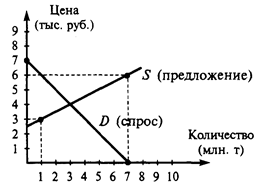SOCIAL AND CULTURAL BACKGROUND
In view of M. Bakhtin’s insight into multi-layered nature of language speech is dialogic, and speakers exist within their cultural contexts, ideologies and social intentions. Any text always has a human and cultural reference. It refers to ideas, feelings, relationships, and social conditions that make sense precisely because they are part of our shared social experience. Textual information is not eternal or timeless, but is situated historically, socially, intellectually, with particular intents and social, gender, class, ethnic, racial perspectives. Hence, studying texts entails looking into the context (social, cultural and intertextual) within which texts are embedded. Comprehension in this direction is aimed at raising the reader’s awareness of historical and socio-cultural factors. Whatever the text, the content is expected to increase one’s awareness of the culturally-induced values of own and other nations and awareness of one’s own priorities to make sure certain cultural standpoints can be explained. Students are motivated to develop the ability to evaluate and refine generalizations about the culture in terms of supporting evidence deduced from the text. In this way one automatically becomes exposed to the range of socio-cultural items such as: - symbols; - realia; - conventions; - customs and traditions; - stereotypes and expectations; - values, beliefs and attitudes. The word symbol comes from Greek symballein (to put together). A symbol brings two things/concepts together. Symbolism is the use of objects, events, or actions to stand in for some things or ideas outside themselves. Thus, in Women in Love (1920)by D.H. Lawrence, the primitive wooden statuette of a naked black woman has symbolic significance, representing men’s subconscious fear of women. Many symbols are taken from the Bible. Symbols differ from culture to culture, for instance, colours symbolise different things, which is reflected in language. Moral and social environment has an impact on fiction. H. Melville begins his short novel Billy Budd, Foretopman, (1891) full of allegorical, symbolic, ethical implications, with the historical data which serve as a background for the described events: “The year 1797, the year of this narrative, belongs to the period which, as every thinker now feels, involved a crisis of Christendom<…> it was something caught from Revolutionary Spirit that at Spithead emboldened man-of-war’s men to rise against real abuses, long-standing ones, and afterwards at the Nore to make inordinate and aggressive demands – successful resistance to which was confirmed only when the ringleaders were hung for an admonitory spectacle to the anchored fleet. Yet, in a way analogous to the operation of the Revolution at large, the Great Mutiny, though by Englishmen naturally deemed monstrous at the time, doubtless gave the first latent prompting to the most important reforms in the British navy.” Close analysis may show that most literary texts contain some information as to social conventions and behavior, stereotypes. The following extract illustrates the social requirements posed to men (gender stereotypes): “I’ve never understood how cars work, beyond a long-standing conviction that petrol is crucial; so when it comes to identifying faults and fixing them, I haven’t got a clue. However, I do realize that it’s important for a man to be able to display the body language of the DIY mechanic if he is to command the respect of his peers, and avoid being mocked, or set upon with baseball bats; so I’m quite capable of giving a tyre a sharp tap with the toe-end of my boot, or saying, ‘Lift up the bonnet,’ and shaking my head pessimistically. Masculine protocol now requires that, without having the faintest idea what I’m looking for, I must lie on the ground and look under the car” (P. McCarthy McCarthy’s Bar). Ethnic stereotypes are often imbedded in fiction. Let’s consider several quotations concerning ethnic stereotypes. ‘I don’t mind being a redneck,’ Luke said. ‘The only thing wrong with rednecks is that they hate niggers and most everything else (P. Conroy The Prince of Tides (1991)). “Gazing and munching and blinking we sit – big loose Australians, intellectual Indians < serious Americans, antiseptic Japanese…” (J. Gardam Groundlings) "The Frogs can't take Scotch. He passed out" (G. Green) The author can promote (consciously or subconsciously) some values, beliefs and attitudes, or mock them as P. McCarthy does: “From an early age it was taken for granted that Jesus was Catholic, God himself was Irish, and I had been born into a wicked, pagan country.” (McCarthy, McCarthy’s Bar). One of the major goals of this Guide is to increase students’ consciousness of cultural similarities and differences and enhance understanding of the diversity of ideas and practices found across cultures in general. We often consider works of fiction within the context of a national literature. However, speaking about English literature we should clearly define whether we speak about literature written in English (British, American, post-colonial literature) or about literature of the British Isles. Literature can bear some national features. Anthony Burgess notes: “English literature, in short, has a freedom, a wiliness to experiment, a hatred of rules which has no parallel in any other literature.” One is to make sure to know TAT (the relationship between Text, Author, Time): · the general social and cultural climate; · the rhetorical context of the text. Text interpretation entails complex interactions between reader, writer and text, suggesting active engagement with the author’s intentions and ideas. It means gleaning contents and then fitting it into certain environment. The process of interpretation is constructed on understanding coherence and view-points brought by the writer and based on cultural norms, beliefs, knowledge, values. The text should be critically processed by students, being holders of their own value system.
|




